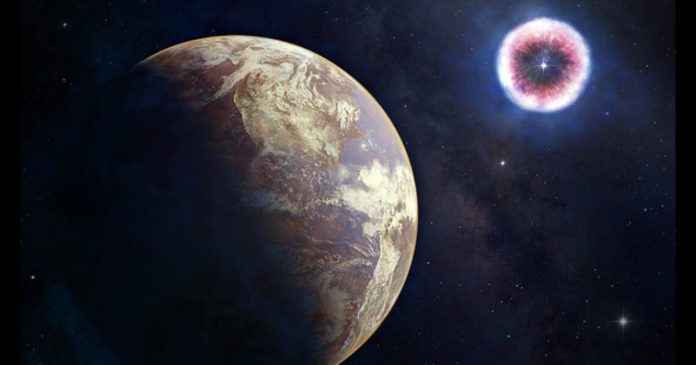Astrophysicists have conducted a fascinating investigation into the origins of radioactive elements on the seafloor, potentially linking them to cosmic explosions. These elements may have played a role in evolutionary changes in viruses in a lake in Africa.
The key piece of evidence is an isotope of iron known as iron-60, which has been discovered in significant quantities on the seafloor. Since radioactive iron-60 would have decayed long ago if it had formed with Earth, its presence suggests a more recent origin. It is possible that nearby supernovae explosions dispersed this iron-60 across Earth.
Researchers at UC Santa Cruz (UCSC) determined the age of the iron-60 and identified two main ages for the atoms – a major spike dating back approximately 2.5 million years and a smaller excess originating around 6.5 million years ago.
The team suspected that these spikes had cosmic origins and traced back the movements of Earth and other celestial bodies in the past few million years. Earth is currently situated in the Local Bubble, a region of space believed to have been created by supernova explosions 10 to 20 million years ago.
About 6 million years ago, Earth entered this bubble, possibly encountering higher radiation levels from the outer wall, which could explain the older iron-60 spike, according to the UCSC researchers.
The second spike, which is larger, is likely the result of a supernova event. By analyzing the positions of nearby stellar clusters over time, the researchers identified two main suspects as potential locations of the supernova progenitor: the Tucana-Horologium cluster and the Upper Centaurus Lupus cluster.
Computer simulations indicate that the supernova explosion would have exposed Earth to increased cosmic rays for up to 100,000 years, explaining the iron-60 spike. This elevated radiation could have caused DNA damage in organisms, potentially leading to cancer or mutations that spur evolutionary changes.
Such DNA damage could have negative consequences, such as elevated cancer rates. Conversely, DNA mutations could accelerate evolutionary processes or cellular mutations, as suggested by Caitlyn Nojiri, the lead author of the study.
The researchers also explored other events that occurred simultaneously, which may have been influenced by the radiation influx. Interestingly, they discovered a study reporting the rapid diversification of viruses in Lake Tanganyika in eastern Africa between two and three million years ago.
While the researchers cannot definitively link these events, they share a similar timeframe. The increased diversification of viruses during that period caught their attention.
The team advocates for further research into how cosmic radiation has impacted evolution on Earth throughout history, a potential avenue for understanding life on other planets as well.
The study was published in The Astrophysical Journal Letters.




